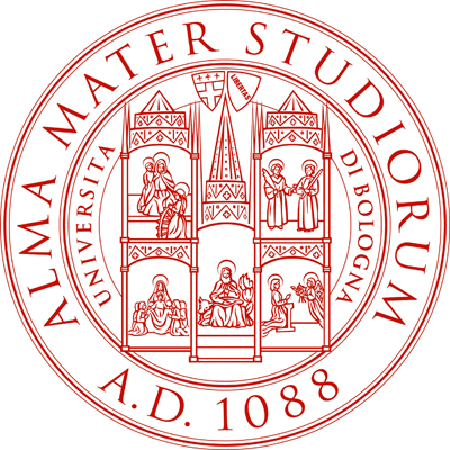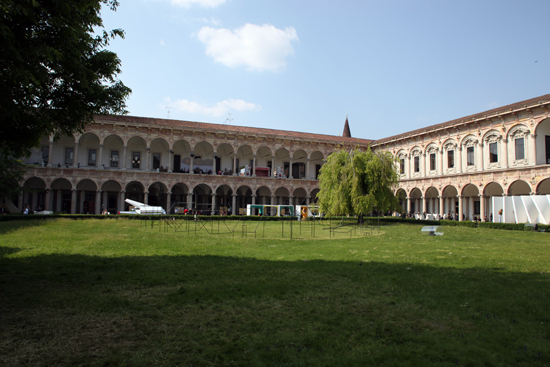Education: Higher Education
The tradition of attending university in Italy dates back to the Middle Ages, and the country has some of the oldest universities in the world. The university system is made up of 97 institutes, of which 67 are state universities.
Details of some of the more significant are given below.
| School | Location (Main Campus) |
| University of Bologna | Bologna |
|---|---|
| Sapienza University of Rome | Rome |
| University of Milan | Milan |
| University of Turin | Torino |
| University of Padua | Padova |
| Polytechnic University of Milan | Milan |
| University of Florence | Firenze |
| Federico II University of Naples | Napoli |
Università di Bologna (University of Bologna)
Via Zamboni 33
40126 Bologna, Italy
Tel: [39] 51 209 9370
Web: www.unibo.it
The University of Bologna (Unibo) is considered the oldest continually operating university in the western world. There is some uncertainty over its exact date of founding, but historians have accepted a date of 1088 from records held on site. Throughout much of its long history, the famous university was noted for teaching humanities, medicine, experimental science, theology, and law. It now has 11 schools: School of Agriculture and Veterinary Medicine; School of Economics, Management and Statistics; School of Engineering and Architecture; School of Foreign Languages and Literature, Interpretation and Translation; School of Law; School of Arts, Humanities, and Cultural Heritage; School of Medicine and Surgery; School of Pharmacy, Biotechnologies and Sport Sciences; School of Political Sciences; School of Psychology and Education Sciences, and the School of Sciences. The university operates seven campuses in five Italian cities, as well as an overseas site in Buenos Aires, Argentina.
The University of Bologna generally appears within the world's top 200 universities on the various different ranking systems used worldwide. It is also the site of the Collegial Superiore di Bologna, founded in 1998 to allow highly motivated students to live together and attend, alongside their traditional university courses, seminars and lectures held by both Italian and foreign professors and researchers. Admission is based on a challenging entrance examination.
Sapienza Università di Roma (Sapienza University of Rome)
Piazzale Aldo Moro 5
00185 Roma, Italy
Tel: [39] 6 49911
Web: www.uniroma1.it
The Sapienza University of Rome is considered the most prestigious of Rome's three state universities. It also is regularly ranked among the world's top 200 universities. Established by papal decree in 1303, the university has a long history.
The modern university operates 11 faculties, a school of advanced studies, a postgraduate school of aerospace engineering, and 58 departments. The main campus is in the city of Rome with four satellite campuses in the smaller local towns of Civitavecchia, Latina, Pomezia, and Rieti. The academic fields of engineering, natural sciences, biomedical sciences, and humanities are Sapienza's strengths.
Università degli Studi di Milano (University of Milan)
Via Festa del Perdono 7
20122 Milan, Italy
Tel: [39] 02 5032 5032
Web: www.unimi.it
The University of Milan is a publicly funded university founded in 1924. It is commonly nicknamed and referred to as Statale (State) to avoid confusion with the other private universities in the city. Given the strong business-oriented environment of the Milan region, teaching is highly focused on industry and business.
The university has 11 faculties covering most disciplines in sciences, arts, law, and the humanities. A master's program in economics and political science is taught entirely in English, and the Faculty of Medicine and Surgery started offering courses in English in 2010.
Università degli Studi di Torino (University of Turin)
Via Verdi, 8
10124 Turin, Italy
Tel: [39] 011 670 6111
Web: www.unito.it
The University of Turin (Unito) was founded in 1404, and throughout its long history has modeled its development on the University of Bologna. Studies in medicine and human health have traditionally been very strong at the university. Studies in social medicine help to meet the health needs of Italy's urban population, particularly with regard to infectious diseases and infant mortality. The first artificial lung was tested at the university, and in 1876, the University of Turin set up Italy's first institute of forensic medicine.
There are 12 faculties in the current university, including human and veterinary medicine, as well as traditional subject areas in the arts and natural sciences. The university also maintains a large botanical garden popular with the public and a museum of human anatomy.
Università degli Studi di Padova (University of Padua)
Via 8 February, 2
35122 Padua, Italy
Tel: [39] 049 827 5111
Web: www.unipd.it
Officially founded as a school of law and theology in 1222, the University of Padua is the second oldest university in Italy. It was established by unsatisfied students from the University of Bologna looking for more academic freedom. As a consequence of its long history, the university campus is a tourist attraction housing nine museums and the oldest university botanical garden in the world. Galileo Galilei taught at the university, and the renowned astronomer Nicolas Copernicus, who provided the world with proof that the Earth revolved around the sun, is a famous alumnus.
There are 12 faculties at the modern university, of which engineering is the largest. An institute for management engineering was recently established in nearby Vicenza to coordinate its research activity in this area.
Politecnico di Milano (Polytechnic University of Milan)
Piazza Leonardo da Vinci, 32
20133 Milan, Italy
Tel: [39] 02 2399 9722
Web: www.polimi.it
The Polytechnic University of Milan (PoliMi) is the largest of Italy's three technical universities; the other two are located in Turin and Bari. At all three locations, engineering, design, and architecture courses are taught and there is also the School of Industrial and Information Engineering. There are 32 engineering programs on offer at PoliMi.
Università degli Studi di Firenze (University of Florence)
Piazza San Marco, 4
50121 Florence, Italy
Tel: [39] 055 27571
Web: www.unifi.it
The University of Florence (UniFi) was founded in 1321 and grew in importance in 1349, when the pope decreed that the first Italian Faculty of Theology would be located in the Tuscan capital. The university has moved between Florence and Pisa on two occasions during its long history, with the current institute officially nominated a university by the Italian Parliament in 1923.
The University of Florence's 12 faculties cover the main academic disciplines and are divided among three campuses in the city. Faculties are grouped together based on their subject matter. For example, the Faculty of Medicine and Surgery, Faculty of Pharmacology, and certain scientific and engineering departments are located together, so certain laboratory facilities can be shared.
Università degli Studi di Napoli Federico II (University of Naples Federico II)
Corso Umberto I, 40
80138 Napoli, Italy
Tel: [39] 81 253 1111
Web: www.unina.it
The Federico II University of Naples (UniNa) is named after its founder Frederick II Hohenstaufen, who was one of the most powerful Holy Roman Emperors of the Middle Ages. The first publicly funded university in Europe traces its founding back to 1224. Today the university consists of 13 faculties covering all major academic disciplines.
Copyright © 1993—2025 World Trade Press. All rights reserved.

 Italy
Italy 



